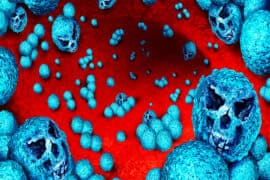
Disease-spreading mosquitoes are thriving near humans
While it is well-known that global warming promotes the spread of disease-carrying mosquitoes, a new study suggests that human activities are also making a major contribution to the issue. Researchers at Oregon State University report that mosquitoes are more abundant in areas that have been altered by human activities compared to undisturbed areas.
The team surveyed Kruger National Park in South Africa and discovered that there were substantially lower numbers of mosquitoes inside the park compared to the densely populated areas around it. One particularly concerning finding was that mosquito species which are known to spread diseases such as malaria and Zika virus were found more commonly in the human-impacted areas outside the park.
Study co-author Dr. Brianna Beechler, a disease ecologist and assistant professor of research in Oregon State’s Carlson College of Veterinary Medicine.
“People care a lot about what environment a lion needs to succeed in; we’ve researched that extensively. But people don’t do that with mosquitoes. We don’t understand them as a group of species and how their ecology differs between species.”
Dr. Beechler said that finding disease mitigation strategies for vector-borne diseases is an obvious target, but scientists do not yet understand mosquitoes well enough to specifically target the species that cause disease. “All we can do is reduce mosquitoes overall, but what may be more effective is to reduce certain species by modifying their habitats.”
To investigate the presence of mosquitoes in disturbed areas, the researchers focused on five pressures associated with human activities including pesticide abundance, the over-mineralization of water that leads to widespread algae growth, population density the presence of domestic and wild animals, and vegetation loss.
The influence of humans on the presence of mosquitoes occurs in a series of cascading effects. For example, pesticide use kills fish and removes the natural predators that would otherwise eat mosquito larvae and help control the population.
During South Africa’s wet season in 2016, the experts trapped nearly 4,000 female mosquitoes, representing 39 different species, from both inside and outside the national park. Mosquito abundance was found to be nearly three times higher outside the park in areas dominated by humans.
The species composition was extremely different as well, with the species known to spread dengue, West Nile virus, yellow fever, Zika virus, and other diseases residing in larger numbers in human-impacted areas.
“It seems to suggest that disease-carrying mosquito species certainly did better in human-altered environments,” said Dr. Beechler. As of now, further research is needed to understand why this is the case.
“With climate change, mosquito distributions are likely to change, and disease distributions are likely to change,” said Dr. Beechler. “So it’d be nice to know how to target those species before that happens.”
The study is published in the journal Scientific Reports .
–—
By Chrissy Sexton, Earth.com Staff Writer












